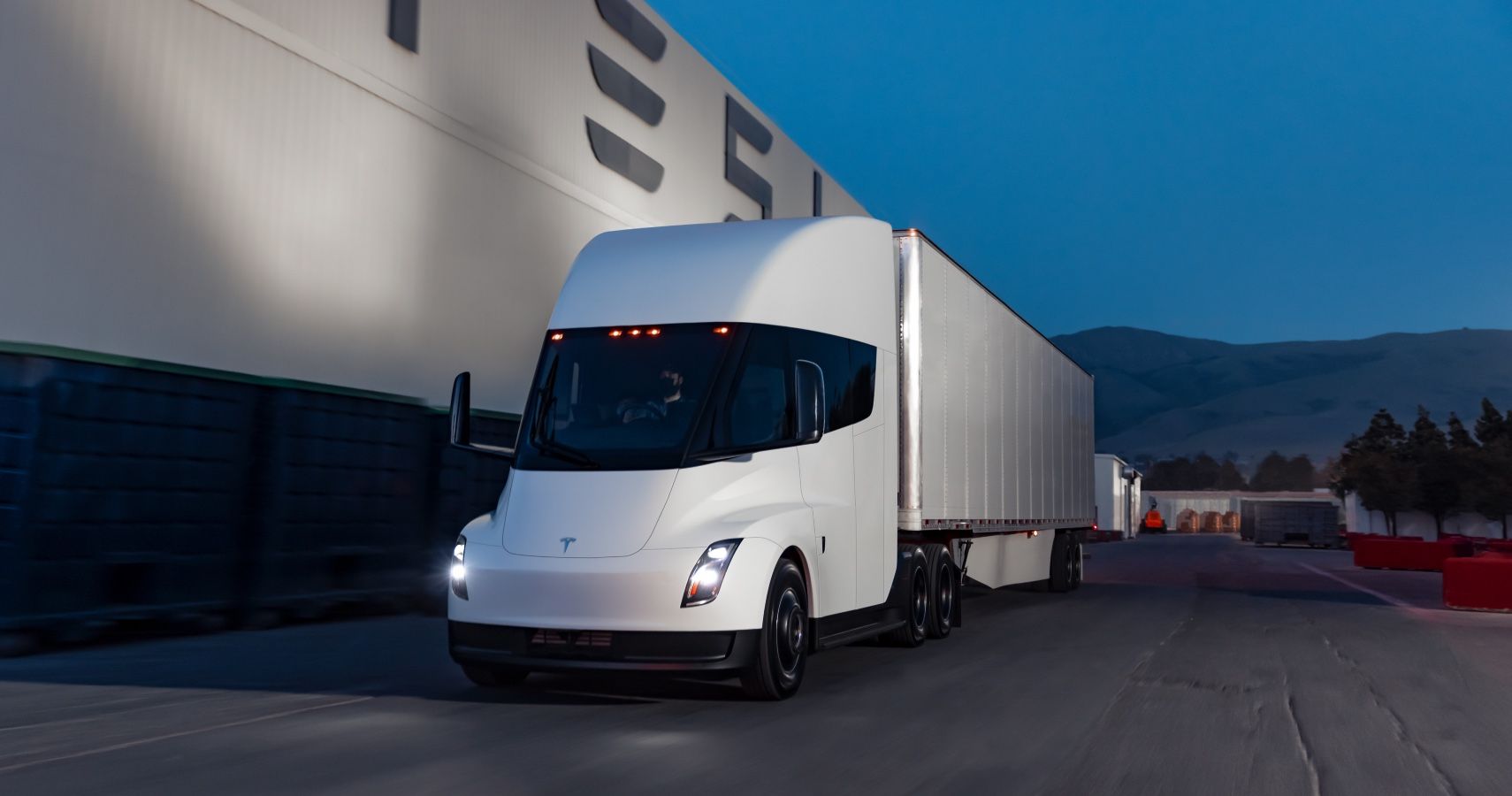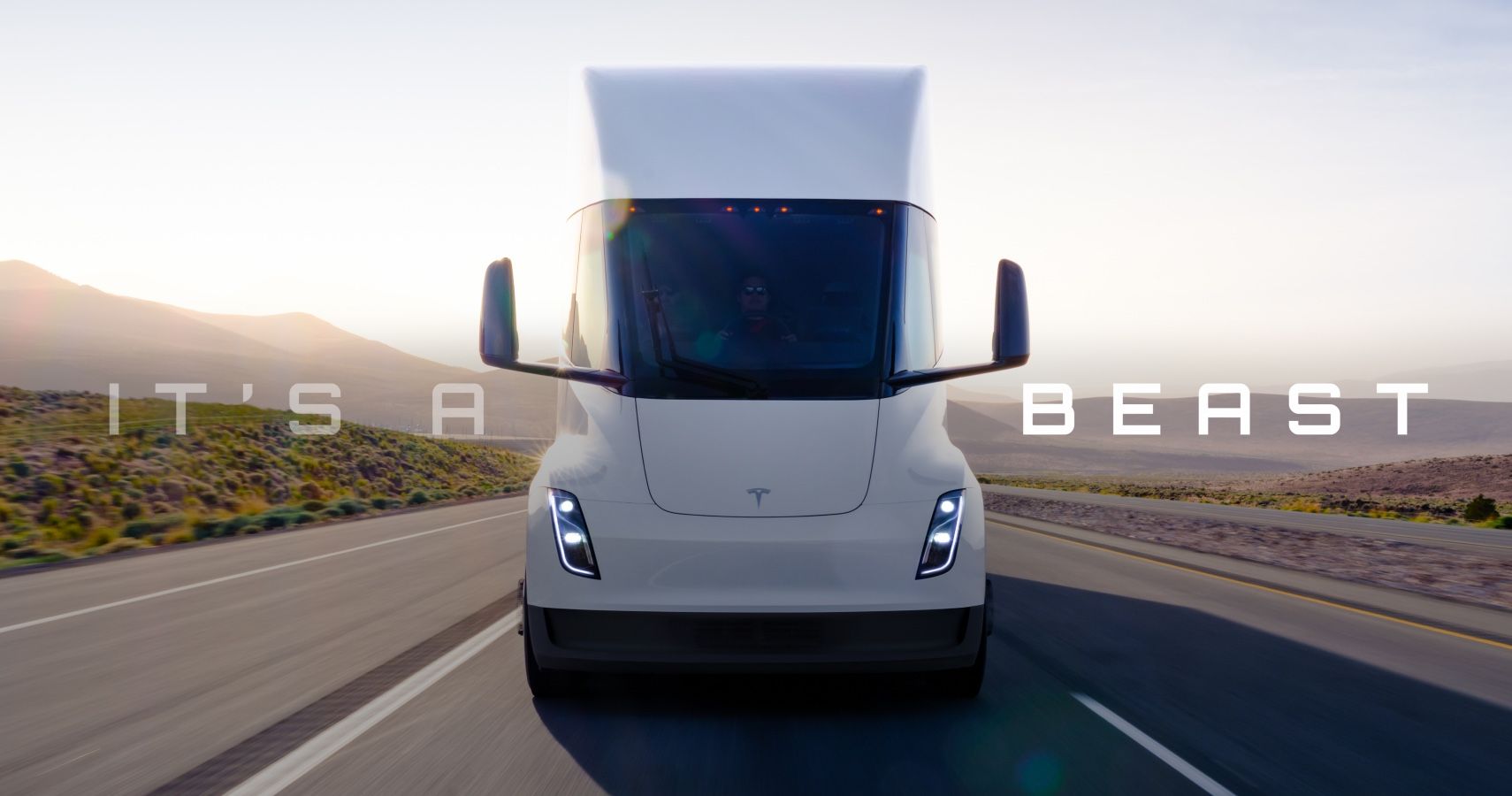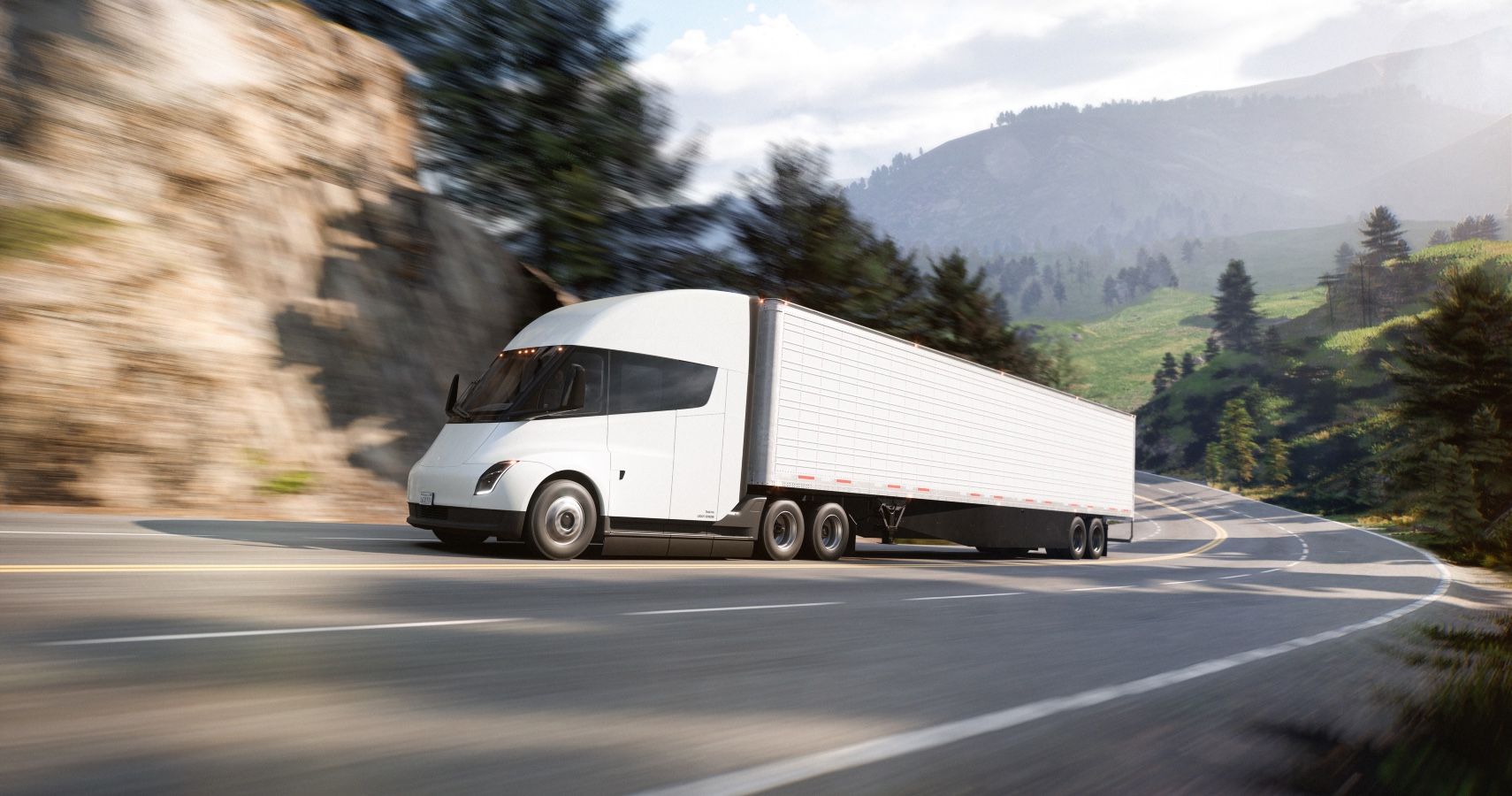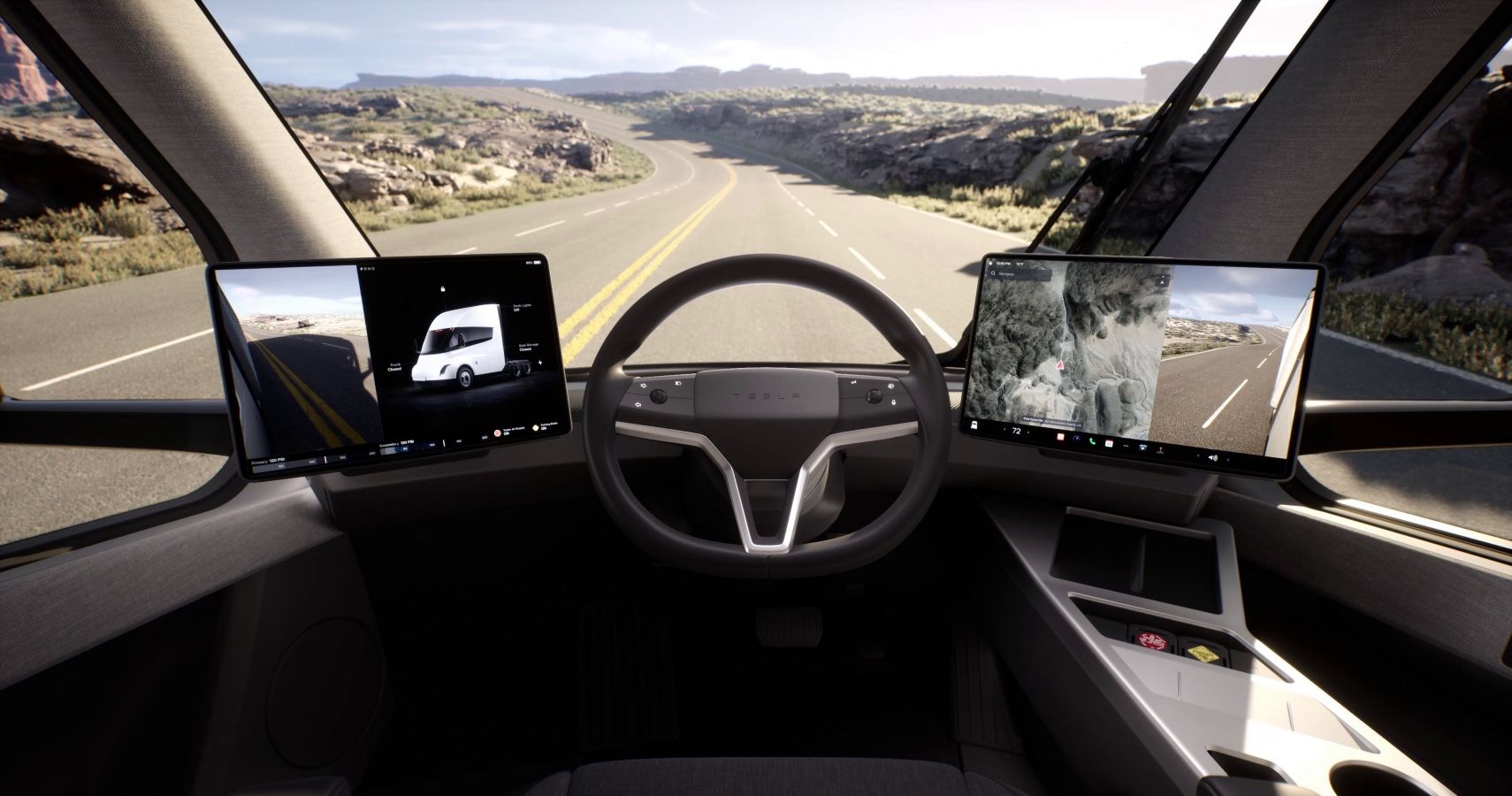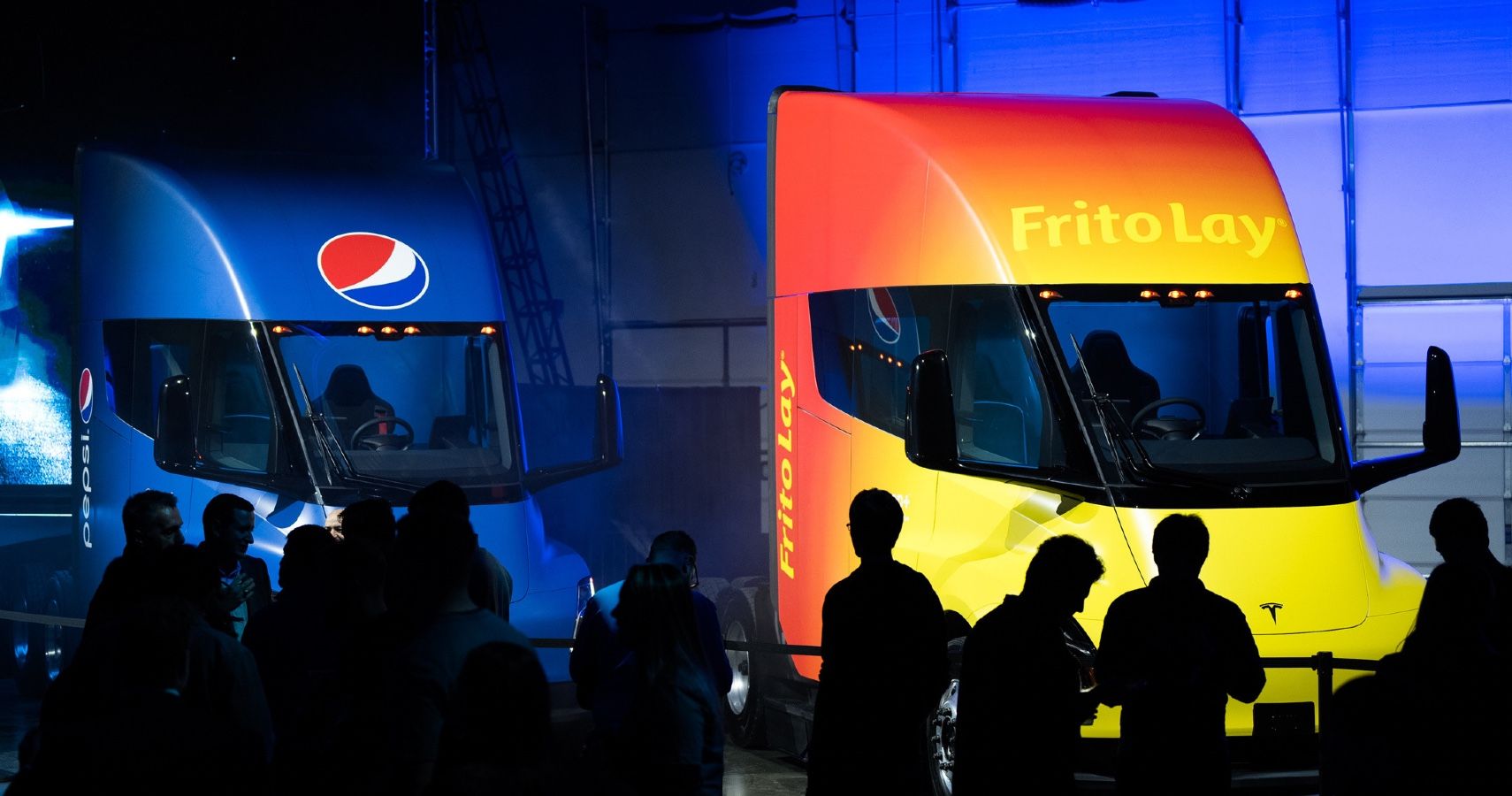The Tesla Semi is the single-most important innovation to hit the industry since refrigeration. We've all seen those big rig trucks puffing out billows of black smoke from their towering exhaust stack. We just look over, give them the signal to blow their cool-sounding air horns, and move on with our lives.
Those trucks are hauling everything from food to household appliances. We need them more than to entertain your kids on a road trip. Our global logistics paired with the large number of trucks needed to deliver all these goods to billions of people allows for an alarming amount of carbon emissions.
Tesla has added some sleek, modern styling to truly bring the tractor-trailer into a new age. Watch the trucking companies swoon as they write out budgets including the purchase of a new Tesla Semi. The interior is a significant break from the current mold of most big rigs as well. Gone are the days of switches, knobs, and buttons.
Like Tesla's commuter vehicles, this cabin is extremely simplistic. Everything was designed to match or exceed the current lineup of diesel rigs on the road today. So, you will not be surprised by the performance of this beast whether we are talking about its 0-60 MPH time, its towing capacity, or its EV stats.
Racing Up A 5% Grade
Semi-trucks on the road today are not known for their speed. Well, that is, if you do not count the crazy guys rippin' them up at the drag strip. A fully loaded trailer hitched to the Tesla Semi weighs in at 82,000 pounds. That is 2000 pounds more than any diesel semi-truck on the road today can handle. A substantial amount of power is needed to move that much weight. The Tesla Semi does it by being equipped with three carbon-sleeved electric motors as seen in the Tesla Model S Plaid.
There are two drive axles in the rear of the Tesla Semi. The first axle has a single motor while the most rearward axle has the other two motors. The single motor axle is constantly engaged as it is designed to maintain highway speeds. The dual-motor axle uses individual motors to control each wheel separately in an attempt to maximize acceleration and torque.
While we do not have power output specs for these motors, we do know how quickly they can manage a payload on the highway. 0-60 miles per hour comes in at a blazing 20 seconds. You have probably owned some slow economy car one time in your life that could barely pull that off. The Tesla Semi can also maintain full highway speed limits while traveling up a 5% grade at full capacity. Jeep Wrangler off-roading rigs out there struggle with this, and with no trailer behind them.
Coast To Coast Electrification
Here is another mind-melter for you. The Tesla Semi is not just for short-distance hauling. According to Tesla, the Semi should cover "Approximately 300 or 500 miles". This means there may be a battery-size option available to better suit your fleet. It also means less than 2 kWh per mile. This is made possible in part by the regenerative braking system that was implemented in previous Tesla designs. This truck can re-gen-brake down a steep hill and get to the bottom with cool conventional brakes. That is impressive as overheated brakes are a common failure on current diesel rigs.
When the charge on the Tesla Semi does deplete it is not going to cost your driver a full extra day to charge. Tesla claims that the Semi can charge 70% of its battery in just 30 minutes. Timing is everything in logistics, so it is great to know that fill-ups will not slow you down. It takes a lot of fuel to make these long hauls which in turn burns even more money. The company claims an estimated fuel cost savings of up to $200,000 over 3 years.
From Trucker To Tech Guy With The Tesla Semi
Tesla likes the K.I.S. (Keep It Simple) method when it comes to styling its interiors. Everything is minimalist and lacks any resemblance to an automotive interior to date. However, this rig seems like the IT guy also had his hand in the design. The driver of a Tesla Semi will get not one, but two, large touch screens to navigate all the truck's functions.
They sit on each side of the central steering wheel. A console is placed to the right of the driver for cup holders and other storage cubbies. The single captain's chair has dual armrests to help battle fatigue while seated, and panoramic windows maintain an unobstructed view.
It is A Numbers Game
Global warming and climate change have been hot topics all over the Earth for several years now. We are going to crunch some numbers for a second to get a better idea of how this new truck is contributing to alleviate carbon emissions.
For every gallon of diesel fuel burned, we create around 23 pounds of tailpipe emissions. On a common 125-gallon semi-truck fuel tank that equates to 2,875 pounds of carbon emissions over approximately 600 miles. Compare that to zero emissions with a Tesla Semi. Sustainable electricity generation has also been a part of these discussions, but the grid is not quite there yet.
Therefore, for the sake of this argument, let's assume these trucks will be charged by a fossil fuel-driven power plant. The average emissions per kWh generated at one of these plants are 0.855 pounds. With an estimated 1000 kWh battery in the Tesla Semi, that is only 855 pounds of carbon emissions for a full charge. This is significantly less than the diesel-fueled trucks of today.
Source: Tesla

